Xylophanes libya
|
|
Updated as per
AN ANNOTATED CHECKLIST OF THE SPHINGIDAE OF BOLIVIA, October 2007
Updated as per http://www.pybio.org/SPHINGINAE.htm (Paraguay), October 2007
Updated as per personal communication with Jose Ramon Alvarez Corral (Barinas, Venezuela) May 28, 2012; ongoing
Updated as per personal communication with Sergio D. Ríos Díaz in CATÁLOGO DE LOS SPHINGIDAE (INSECTA: LEPIDOPTERA) DEPOSITADOS EN
EL MUSEO NACIONAL DE HISTORIA NATURAL DEL PARAGUAY; sent to me in July 2014 by Sergio D. Ríos Díaz.
Updated as per personal communication with Bedros Orchanian (Cozumel, Quintana Roo, Mexico); January 27, 2015
|
Xylophanes libya
zail-AH-fan-eesMLIB-ee-uh
(Druce, 1878) Choerocampa
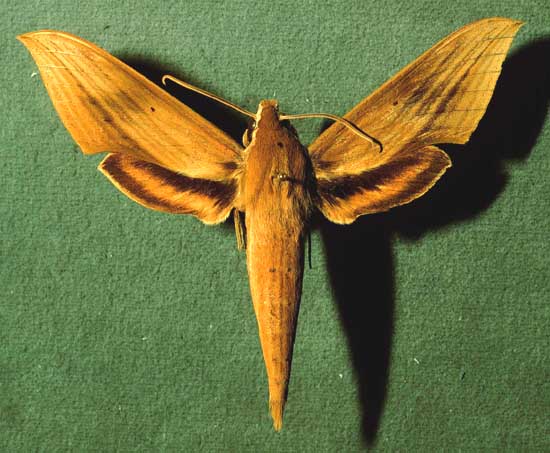
Xylophanes libya male courtesy of Dan Janzen.
This site has been created by
Bill Oehlke at oehlkew@islandtelecom.com
Comments, suggestions and/or additional information are welcomed by Bill.
TAXONOMY:
Family: Sphingidae, Latreille, 1802
Subfamily: Macroglossinae, Harris, 1839
Tribe: Macroglossini, Harris, 1839
Genus: Xylophanes Hubner [1819] ...........
Species: libya (Druce, 1878)
|
MIDI MUSIC
.....It's a Wonderful World.....
copyright C. Odenkirk
ON.OFF
<bgsound src="world.mid" LOOP=FOREVER>
|
DISTRIBUTION:
Xylophanes libya moths (Wing span: 2 11/16 - 2 15/16 inches (6.8 - 7.4 cm)) fly
from Amazonas and the Guianas north through
Mexico: Quintana Roo: Cozumel;
Belize: Corozol, Cayo, Stann Creek, Orange Walk, Toledo;
Guatemala: Izabal (JM) to
South Texas.
Panama is the specimen type locality. Moths have been taken in Venezuela: (Barinas (JRAC)), and as
far south and west as
Bolivia: Santa Cruz: Ichilo, La Víbora;
Cochabamba: Chapare, Incachaca, (2000m);
Paraguay:
Canindeyu, Alto Parana, Caaguazu. (possibly the Paraguayan reports are in error)
The upperside of the forewing is olive brown with darker shading and dark longitudinal lines. The upperside of the hindwing is dark olive brown with an
orange-yellow postmarginal band. The underside of both is dull orange-yellow with dark shading and spots. The
forewing has a tan patch along the outer margin.
This moth is probably synonymous with Xylophanes pallescens.
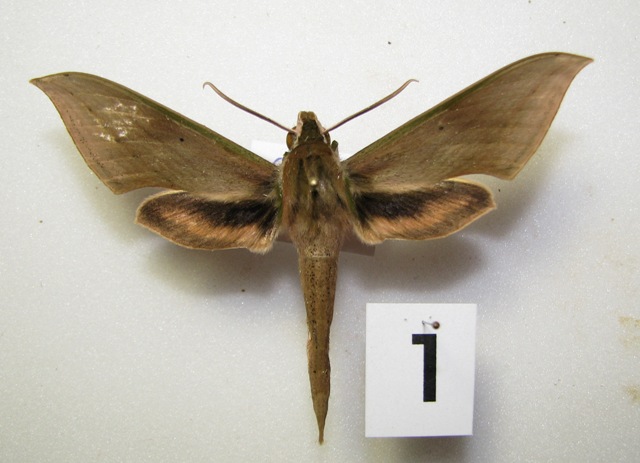
Xylophanes libya, Cozumel, Quintana Roo, Mexico,
courtesy of Bedros Orchanian.
The pronunciation of scientific names is troublesome for many. The "suggestion" at the top of the page is
merely a suggestion. It is based on commonly accepted English pronunciation of Greek names and/or some
fairly well accepted "rules" for latinized scientific names.
The suggested pronunciations, on this page and on other pages, are primarily put forward to assist those who hear with internal ears as they read.
There are many collectors from different countries whose intonations and accents would be different.
Jean Marie Cadiou writes, "When I say "Xylophanes" in English I pronounce it something like "Zailophanees", with the emphasis on the
"o". The French pronounce it differently, something like "Kzeelophaness" with no emphasis, and the Germans yet in a different way..."
"Xylophanes" sounds like it is from Greek mythology.
In Greek mythology, Libya was the daughter of Epaphus, a son of Zeus and King of Egypt, and Memphis. She was ravished by the god
Poseidon to whom she bore twin sons, Belus and Agenor.
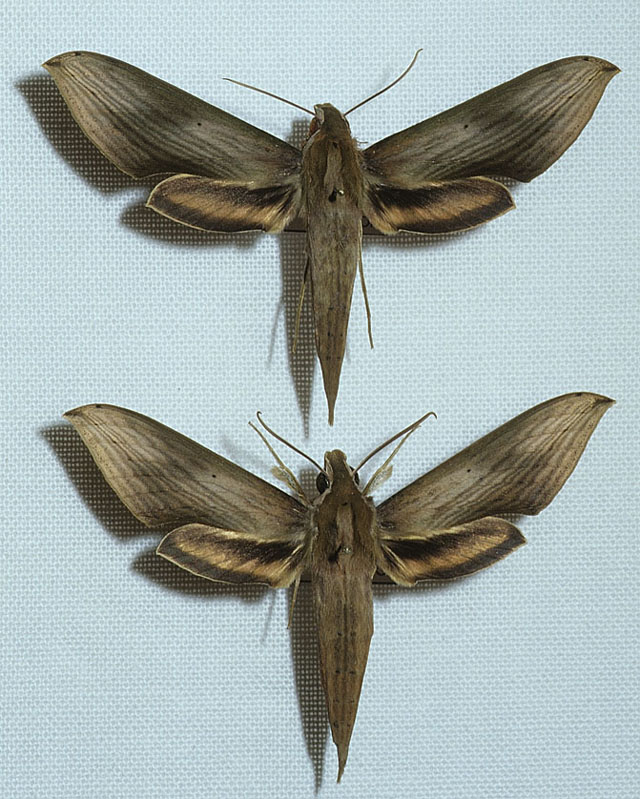
Xylophanes libya male (top), Xylophanes libya male (bottom),
courtesy of Hubert Mayer
copyright.
FLIGHT TIMES:
The Libya sphinx, Xylophanes libya,
adults probably brood continuously with pupae emerging after rains.
In Costa Rica moths have been taken in every month of the year. The
south Texas flight occurs in October. In Bolivia this species has been
taken in April.
ECLOSION:
Pupae probably wiggle to surface from subterranean chambers just prior to eclosion.
SCENTING AND MATING:
Females call in the males with a pheromone released from a gland at the tip of the
abdomen. Males come in to lights very readily, but females are seldom taken in that way.
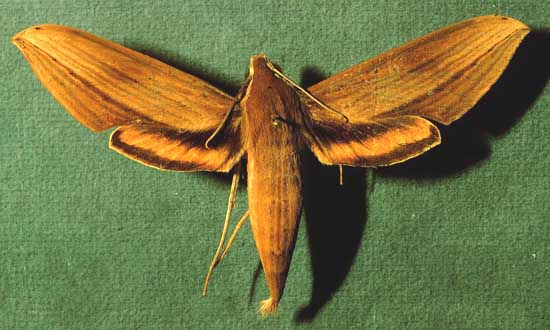
Xylophanes libya female courtesy of Dan Janzen.
EGGS, LARVAE, PUPAE:
Larvae feed on Psychotria horizontalis, Psychotria nervosa, and Psychotria microdon
of the Rubiaceae family.
This species has a dark caterpillar. The eyes are yellow with large dark black centers.
The last two instars have a large blue dot in the eyes which makes them look crossed. There is a black pupil in center
of each eye, a patterned iris, and a faint yellow eye ring. The tail is a straight spike needle in last instar; the caterpillar is dark brown.
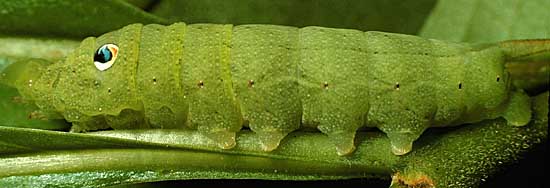
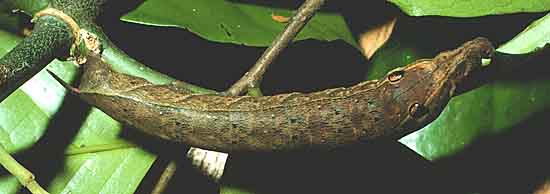

Moths emerge approximately 15-20 days after larvae pupate. The cremaster is sharp. |
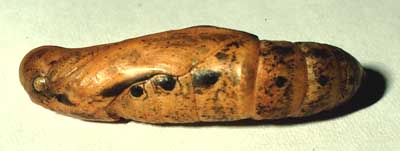 |
Use your browser "Back" button to return to the previous page.
Goto Main Sphingidae Index
Goto Macroglossini Tribe
Goto Central American Indices
Goto Carribean Islands
Goto South American Indices
Goto U.S.A. tables







